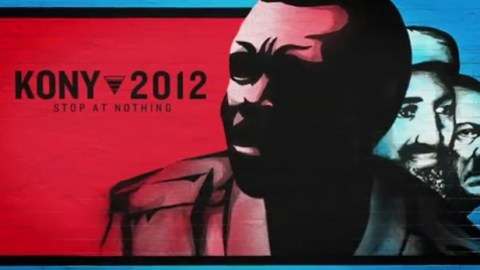KONY 2012 and the Global Hive Mind

The speed with which KONY 2012 went viral around the world has been stunning. Even if you don’t love the politics of Invisible Children’s “Stop Kony” campaign, it’s hard to find fault with the execution of a viral video campaign that attracted 100 million YouTube views within a week, making it the most successful viral video ever in the history of the Web. The KONY 2012 campaign attracted the social media support of A-list celebrities like Justin Bieber and Oprah, as well as the attention of billionaire philanthropist Bill Gates. The global Hive Mind, once thought to be disintegrating into a cacophonous Collective Monologue, has returned with a vengeance. It’s not only the KONY 2012 campaign – Reddit has been able to amass thousands of supporters to rally around specific causes, while tens of thousands Wikipedia supporters led an Internet Blackout to protest SOPA back in January.
The goal of the KONY 2012 campaign was to bring world attention to the brutal atrocities of Ugandan leader Joseph Kony, to make him “(in)famous” to the Internet world. In fact, Invisible Children aimed even higher than that, hoping to have Kony arrested and tried for war crimes in the court of world opinion. This viral campaign has proven to be a stunning example of what tens of millions of people around the world, armed with nothing more than their digital devices and social media accounts, can do when they are united behind a common goal. KONY 2012 was more than a viral meme or an online movement, it was as if the world’s Internet users were plugged into a vast, hyper-connected Hive Mind.
The concept of the global Hive Mind, of course, dates back to the early days of the social Web, when the appearance of collective intelligence sites like Wikipedia quickly excited the imaginations of the tech digerati, giving them a glimpse of the power of a great online collective consciousness to transform the Web into a wonderful, highly-curated Borgesian Library. Trusted curators emerged, speeding up the process of making sense of all this new information on the Internet. Building on this original momentum, it was a quick leap to “the wisdom of crowds” and the creation of new sites that tapped into the power of the crowd to do everything from creating ideas for new Super Bowl commercials to developing new products for companies.
At the same time, the open-source software movement picked up momentum as a way for software developers all over the world to contribute to the same project. The success of open source software initiatives like Linux, in turn, led to new “open data” initiatives from companies eager to open up their proprietary data and information to the world, with the goal of accomplishing certain goals faster and cheaper than ever thought possible. The latest iteration of the Hive Mind has been the development of Massively Open Online Courses, where tens of thousands of minds around the world are linked together as part of new education initiatives.
There have been some hiccups along the way in the growth and development of this Hive Mind, including the nagging sense that its arrival would mean the appearance of Digital Maoism. It would mean the subjugation of the individual to the collective, all in the name of a vaguely Marxian goal like the Collective Consciousness of the world. Jaron Lanier has been one of the strongest voices warning of the perils of the global Hive Mind, warning that individuals are becoming increasingly subjugated to the whims of the collective, that social media sites such as Facebook – with their promise of bland profile templates for hundreds of millions of people – are turning all of us into blind, unthinking gadgets. There is also the risk that the much-vaunted Wisdom of Crowds could morph into the Illogic of the Mob.
Fair enough. But the key to the success of the KONY 2012 campaign was using social media as the central nervous system of a massive collective consciousness. Using Facebook and Twitter, it was possible to bring attention to the cause quickly and decisively. In this case, it was an obscure Ugandan dictator and a brutal army stocked with child soldiers committing unspeakable atrocities. The viral KONY 2012 video is all about the power of social media to connect people all over the world.
So what’s next? The next step in the development of the Hive Mind is the true evolution to Swarm Intelligence and a new generation of true artificial intelligence. As Singularity proponent Ray Kurzweil points out (most recently at SXSW 2012), this new generation of artificial intelligence would mean the creation of the Ultimate Thinking Machine, in which human minds are combined with computer intelligence. The future described by Kurzweil sounds almost too outrageous to be true – swarms of nanobots taking care of our bodies and communicating with each other in real-time: “Over the next decade, we will see realistic virtual reality that is ubiquitous as well as augmented reality. We will gain mastery of our biology and will start to update the outdated software that runs in our bodies. Computers will master natural language. They won’t wait for you to ask them a question, they will be watching us and listening in and will offer help that they see we need. They will know our needs before we do.”
The Internet has already shown its ability to organize social activists and political organizers, to power everything from online R&D labs to massively online educational initiatives. With the creation of a billion-strong Facebook network, it has shown the power to create a truly global communications network. And, as anyone who has ever pulled a lazy Twitter move knows, it can also be the surprising source of instantaneous answers from random strangers to just about any question you could ever pose. Something very profound is occurring online, and campaigns like KONY 2012 are just the beginning. Get reading for a new generation of artificial intelligence initiatives to create wonderful solutions to the world’s most important problems.





